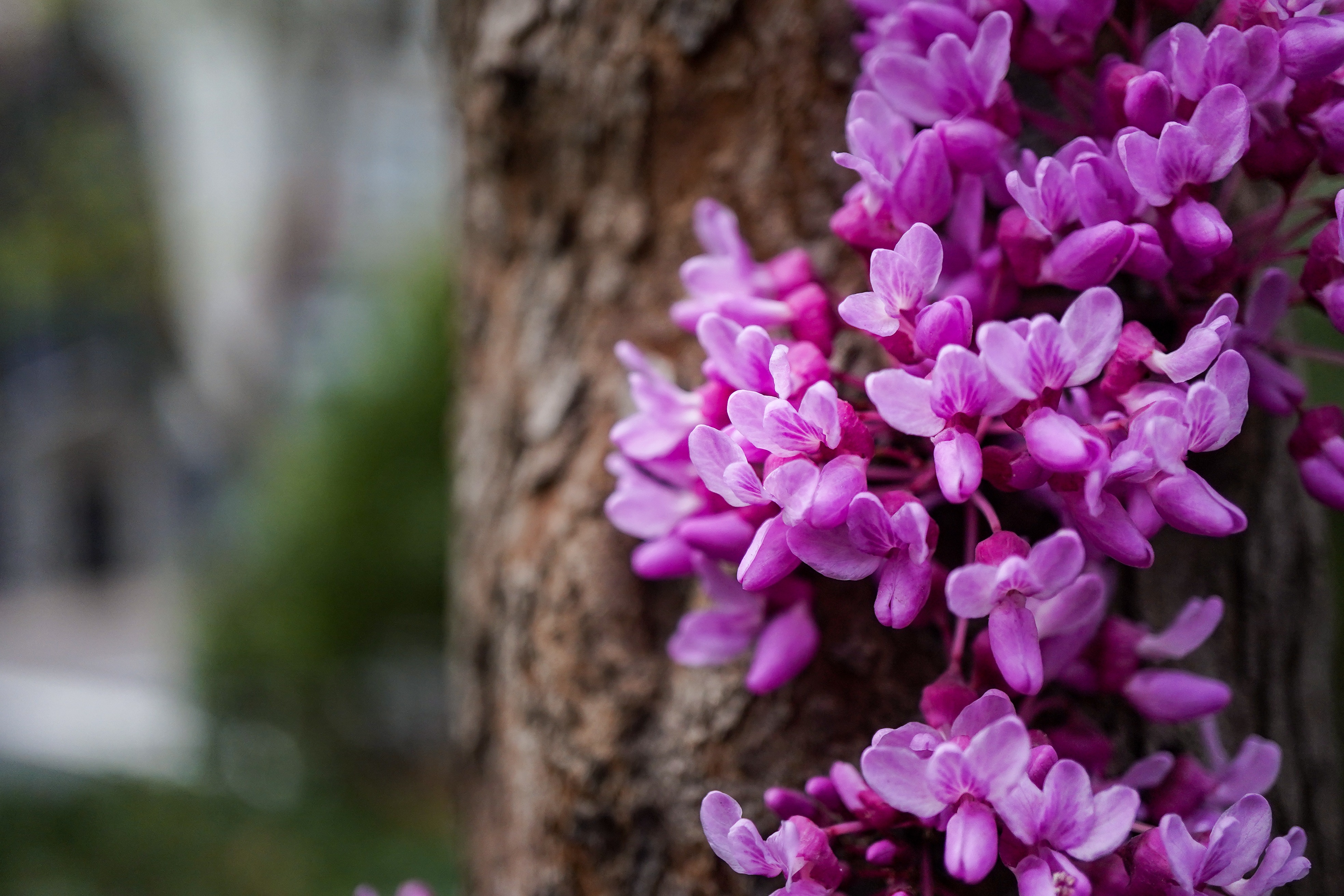This site uses cookies – Learn more.
Celebrating Redbuds
Celebrating Redbuds

Redbuds usher in springtime around the city in a subtle yet striking way. You may notice them gradually as the tiny, colorful clusters of flower buds along their woody trunks, stems, and branches begin to enlarge before opening. The botanical term for this type of flowering is cauliflory, and it has the advantage of allowing pollination and seed dispersal by larger, ground-dwelling animals. Their pea-like flowers remind you of Cercis’ place in the legume family and provide supplies of nectar to pollinators before giving way to the unfurling of heart-shaped foliage. Native leafcutter bees treasure those characteristic leaves as they are solitary and do not create colonies like honeybees which are social. They cut circular fragments from them and other types of soft leaves, carrying them back to nesting areas for use as a construction material to line their nest cells.
The genus Cercis contains approximately 10 species. Madison Square Park’s collection of 35 varieties of redbuds comes from two hardy species you may already be familiar with. Cercis canadensis, commonly known as the eastern redbud or American Judas tree, is an ornamental staple among our native North American trees. Oklahoma has even claimed it as its state tree! They range geographically from Canada all the way south to Mexico. They thrive in understories, typically growing up to 30 feet, and feature a rounded crown.
Native Americans would make tea from its inner bark to help treat a variety of ailments as it is rich with tannins and therefore had many medicinal uses as an astringent. Their edible and nutrient-rich flowers and seed pods were also used in meals. Cercis chinensis, or Chinese redbud, is native to Central & Southern China. Their flowers can be larger than those seen on C. canadensis, and they typically possess an open, multi-branching shrub form that can grow up to 15 feet here in the United States. Soil bacteria along this tree’s roots can fix atmospheric nitrogen into a nutritional form available to the tree itself and other plants nearby.
On your next stroll through the park, we invite you to explore the redbuds we have dotted throughout our 6.2 acres. Join us in appreciating its blooms and various offerings and see if you don’t fall just a little more in love with spring.



